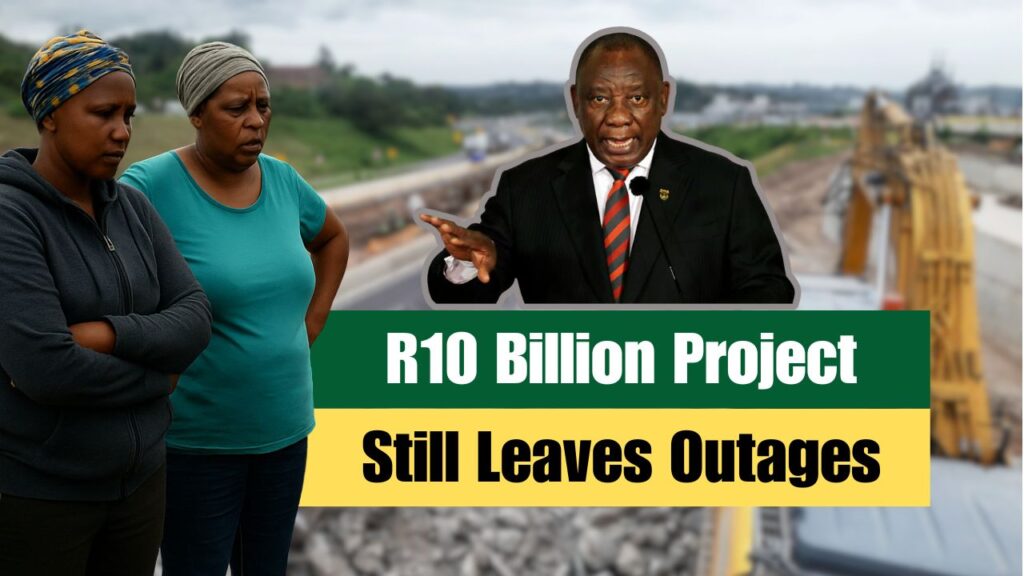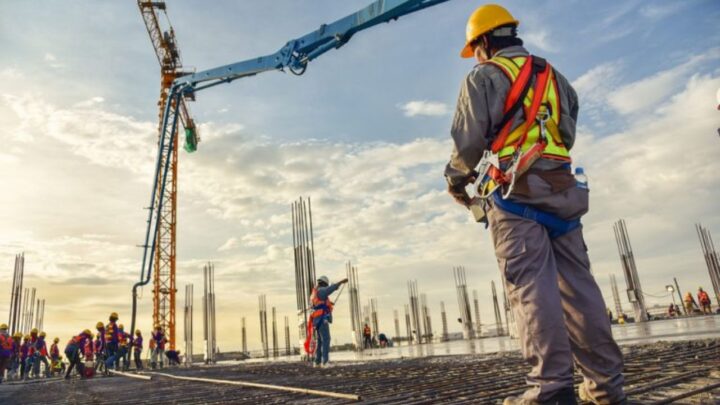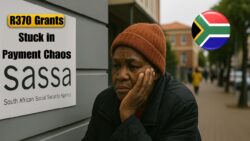Despite the South African government spending over R10 billion on infrastructure repairs in 2025, citizens continue to face daily power outages, water shortages, and transport disruptions. The investment was meant to rebuild decaying municipal systems, improve public utilities, and enhance service delivery. However, frequent breakdowns, aging pipelines, and power grid instability persist across many regions. South Africans are increasingly frustrated as promised upgrades fail to deliver visible improvements, raising serious concerns about accountability, project management, and the long-term sustainability of public infrastructure investments in the country.

South African Government’s R10 Billion Infrastructure Spending Plan
The R10 billion infrastructure repair program launched by the South African government aimed to modernize essential public services. Funds were allocated to repairing roads, upgrading water supply networks, and improving the Eskom electricity grid. Despite these efforts, reports from various provinces indicate that many projects remain incomplete or delayed. Corruption, mismanagement, and poor maintenance have contributed to the recurring breakdowns that citizens still endure daily. Experts warn that without strict monitoring and transparent tender processes, such massive spending will not translate into better living standards for ordinary South Africans.
Key Challenges Affecting Infrastructure Performance in South Africa
One of the biggest challenges undermining South Africa’s infrastructure recovery is poor maintenance and oversight. Many municipalities continue to rely on outdated systems that frequently collapse under pressure. Water treatment plants and sewage systems, in particular, face severe strain due to underfunding and lack of skilled personnel. Furthermore, load shedding and electricity blackouts continue to cripple industries and households alike. While government funding is significant, experts suggest that the absence of a unified infrastructure management strategy is the real reason citizens still experience daily service disruptions despite the R10 billion investment.
Where Did the R10 Billion Infrastructure Budget Go in South Africa?
The breakdown of the R10 billion expenditure shows how funds were distributed across different sectors, but transparency remains an issue. A large portion went to provincial road repairs, with smaller amounts directed toward sanitation and energy recovery programs. The Department of Public Works has acknowledged delays in several key projects due to procurement bottlenecks. Meanwhile, citizens continue to face the same daily problems — power cuts, burst water pipes, and poor road conditions — leaving many to question whether the infrastructure spending was efficiently utilized or merely announced for political optics.
| Sector | Allocated Budget (R Billion) | Purpose | Status (2025) |
|---|---|---|---|
| Road Repairs | 3.2 | Fixing potholes and damaged highways | Partially Completed |
| Water Infrastructure | 2.5 | Upgrading treatment and supply systems | Ongoing |
| Electricity Grid | 2.1 | Upgrading Eskom distribution network | Delayed |
| Sanitation Projects | 1.0 | Modernizing waste management systems | In Progress |
| Public Transport | 1.2 | Rehabilitation of bus and rail infrastructure | Pending Completion |

Impact of Ongoing Service Failures on South African Citizens
Service delivery failures have created widespread frustration among South Africans, especially in rural and low-income communities. Constant power cuts have hurt small businesses, while water shortages are threatening public health. Transport delays caused by poor road networks also impact school attendance and job opportunities. Despite the government’s R10 billion investment, the day-to-day life of citizens remains burdened by infrastructure collapse. Many community organizations are calling for stronger oversight and citizen-led monitoring to ensure that future funds are spent effectively and that infrastructure projects finally bring tangible benefits to the people of South Africa.
 SASSA Grant Payments Coming in November 2025 – How much will you get in this month? Check Amount
SASSA Grant Payments Coming in November 2025 – How much will you get in this month? Check Amount
Frequently Asked Questions (FAQs)
1. Why is South Africa still facing infrastructure failures despite spending R10 billion?
Due to corruption, poor maintenance, and delays in project completion across multiple departments.
2. Which sectors received the most funding under the R10 billion plan?
Roads, electricity, water, and sanitation sectors received the largest shares of the infrastructure budget.
3. Has the R10 billion improved service delivery for South Africans?
Not significantly yet, as most projects are still ongoing or facing delays due to logistical challenges.
4. What steps are being taken to improve infrastructure transparency?
The government has proposed stricter audit mechanisms and community oversight for all public projects.




